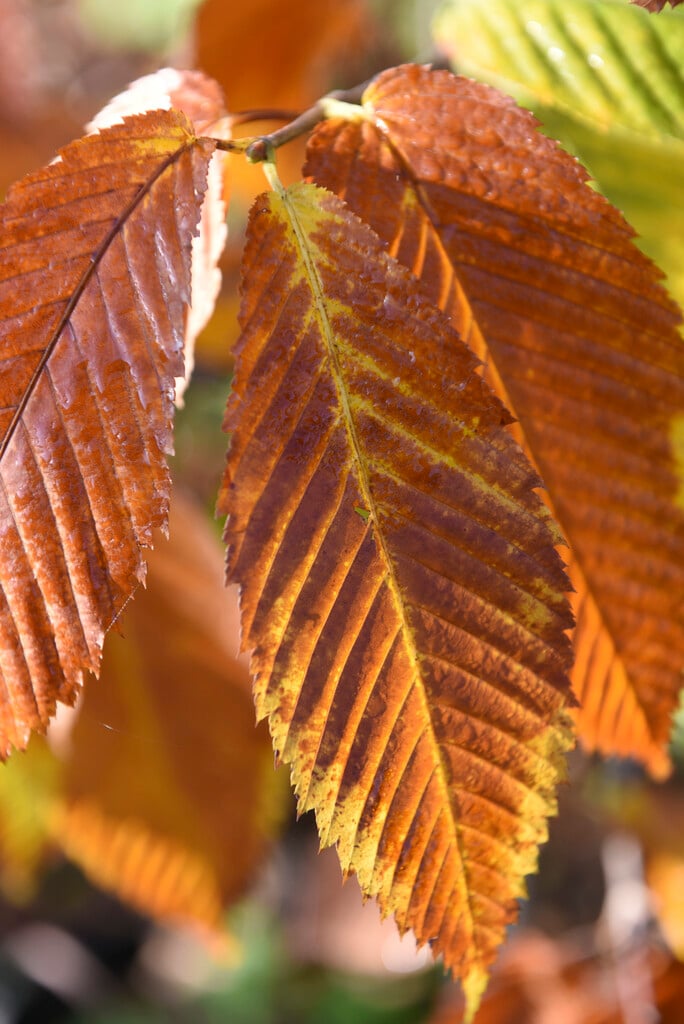Acer carpinifolium
hornbeam maple
This bushy, spreading tree with upright branches has distinctive drooping, oval leaves, with prominent veins, toothed edges and tapering at the tip resembling those of the common hornbean. The leaves are neater and opposite and turn gold and brown in the autumn.
Size
Ultimate height
8–12 metresTime to ultimate height
10–20 yearsUltimate spread
Wider than 8 metresGrowing conditions
Moisture
Moist but well–drainedpH
NeutralColour & scent
| Stem | Flower | Foliage | Fruit | |
| Spring | Green | Green | ||
|---|---|---|---|---|
| Summer | Green | |||
| Autumn | Gold Brown | |||
| Winter |
Position
- Full sun
- Partial shade
Aspect
East–facing or North–facing or South–facing or West–facing
Exposure
Exposed Hardiness
H6Botanical details
- Family
- Sapindaceae
- Native to GB / Ireland
- No
- Foliage
- Deciduous
- Habit
- Bushy
- Genus
Acer can be deciduous trees or large shrubs with paired, often palmately-lobed leaves and small flowers followed by characteristic winged fruits. Many have fine autumn colour, and some have ornamental stems
- Name status
Correct
- Plant range
- Japan
How to grow
Cultivation
Grow in a fertile, moist but well-drained soil in full sun or part shade
Propagation
Propagate by seed in mid to late autumn or spring. Take softwood cuttings in early summer
Suggested planting locations and garden types
- Coastal
- Low Maintenance
Pruning
Pruning group 1 but prune only from late autumn to midwinter. Can be hard pruned for a neater shade or for larger foliage
Pests
May be susceptible to Acer gall mite, aphids, caterpillars and horse chestnut scale
Diseases
May be susceptible to Verticillium wilt, Acer leaf scorch and honey fungus
Get involved
The Royal Horticultural Society is the UK’s leading gardening charity. We aim to enrich everyone’s life through plants, and make the UK a greener and more beautiful place.
